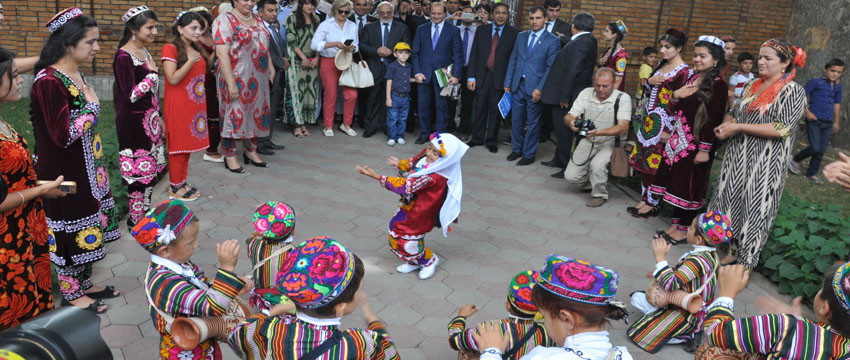Tajikistan, which is located in Central Asia has a distinctive culture attributed to its rich historical past. Today, the population of Tajikistan is over 8.7 million individuals, who live in either the metropolitan areas or the rural areas (also referred to as the highland).
The majority of these individuals identify as being of Tajik ethnicity, although Turkmen, Uzbeks, Russians, Ukrainians, Bukharan, and European Jews also live here. All of these individuals have contributed to the current culture of modern-day Tajikistan.
The Culture Of Tajikistan Includes Its Social Beliefs And Customs, Religions And Festivals, Music And Dance, Literature And Arts.
Social Beliefs And Customs
The social beliefs and customs of Tajikistan are largely influenced by Islam, which is practiced by approximately 98% of the population. This religious influence has resulted in what many individuals may consider conservative beliefs and customs.
One example of this is the widely held custom that women and girls must never be left alone with a man or group of men. This separation of the sexes may also be seen at large social events, where women tend to congregate in one specific area while men gather in another.
An additional component to the social beliefs and customs of the people of Tajikistan is the importance placed on showing respect and extending hospitality. One of the ways in which individuals here show respect can be seen in the way they greet other people.
Religion And Festivals
As previously mentioned, Islam is the most widely practised religion in this country. Prior to the introduction of Islam, the people of this region celebrated a festival known as Navruz. This festival, also known as the Persian New Year, continues to be an important event today.
It has its roots in the ancient traditions and practices of celebrating the harvest and planting seasons. Navruz, for example, falls at the start of the spring season, which is historically the time for planting new crops.
In Tajikistan, this festival is observed for a total of 4 days, from March 20th to March 23rd of every year. To celebrate Navruz, the people of Tajikistan get ready for the new season of growth and fertility by getting rid of old household goods, playing games outside and visiting friends and family. Additionally, special dishes may also be prepared depending on the region.
Music And Dance
Traditional music, also known as folk music, continues to have an important role in the current culture of Tajikistan. Some of the instruments used to produce the folk music of this country include the daf, rubab, and karnay.
The daf is played as a percussion instrument and is made of a wooden ring that is covered with an animal skin. On the inside of the ring is a line of metal hooks and rings that make a sound when the instrument is struck.
The rubab is a stringed instrument that resembles a lute. Finally, the karnay is an extremely long trumpet type instrument that is made of brass or copper. It is considered a national instrument of Tajikistan.
The traditional dances of Tajikistan cover a wide range of purposes, from those meant to imitate nature to those used for ceremonial purposes. Men and women tend to dance separately with men performing dances that are more energetic and faster in nature than those performed by women. Some examples of these include dances include the fire dance, the sword dance, and the knife dance.
Literature And Arts
In addition to music and dancing, the culture of Tajikistan is marked by a long and enduring participation in literature and arts. Historically, the literary centres of Tajik culture have been in the cities of Samarkand and Bukhara. Currently, however, these cities are now considered to be within the borders of the country of Uzbekistan.
During the Soviet era, the literature written in Tajikistan was influenced by what was permitted or prohibited by the ruling government. As a result, historians have labelled the literature from this era as socialist realism. Today, the pride in the literary tradition of this country is closely tied to the pride of language preservation.
Perhaps one of the most well-known modern writers from this country is TemurZulfiqorov, who has written in the Tajik language and is believed to have kept the Persian literary tradition alive.
The art of Tajikistan may be expressed through a variety of mediums including wood carvings, weavings, and embroidery (to mention a few). Many artistic designs in this country incorporate complex details that can be observed in the artwork over the last several centuries.
